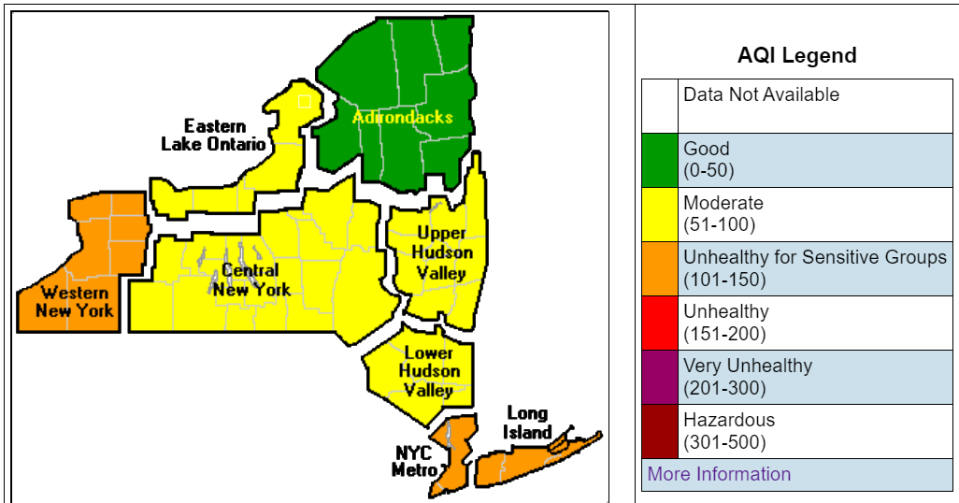NY issues air quality advisory for NYC area, Long Island, Western NY on Friday
Air quality in and around New York City, Long Island and Western New York is set to display elevated levels of ozone Friday, raising concern among state environment and health officials.
In an air quality health advisory, officials warned about ozone levels that exceed the state’s Air Quality Index of 100, indicating greater health concern. It is in effect from 11 a.m. to 11 p.m.
Which areas of NY are affected?
The advisory – issued by Department of Environmental Conservation Commissioner Basil Seggos and Depart of Health Commissioner Dr. James McDonald – applies to the New York City metropolitan area, which includes Rockland and Westchester Counties, Long Island, and Western New York counties stretching from Niagara to Cattaraugus.
In New York City’s Central Park, temperatures tomorrow are expected to reach a high of 88 degrees, the National Weather Service forecasted.
How are summer heat and ozone related?
Summer heat, Seggos and McDonald’s advisory said, can form ground-level ozone, a component of photochemical smog that often come from car exhaust and “out-of-state emission sources.” The advisory called these sources of ground-level ozone “the most serious air pollution problems in the northeast.” This is not to be confused with the protective layer of ozone in the upper atmosphere, officials said.

Should you limit your time outside?
Young children, people exercising outside, those involved in vigorous outdoor work, and others who have respiratory diseases such as asthma should limit strenuous outdoor physical activity when ozone levels are highest, generally in the afternoon to early evening, the advisory said. People experiencing symptoms like shortness of breath, chest pain or coughing should consider consulting their doctors.
When outdoor ozone levels are elevated, people should go indoors to reduce exposure.
What else could you do to decrease ozone levels, reduce exposure?
Ozone levels usually decrease at night and can be minimized during the day by limiting car travel, and to opt for public transit where it’s available.
Officials recommended other steps, including:
Combine motor vehicle trips, including carpooling;
Turn off all lights and electrical appliances in unoccupied areas;
Use fans to circulate air; if air conditioning is necessary, set thermostats to 78 degrees;
Close blinds and shades to limit heat build-up and to preserve cooled air;
Limit use of household appliances; if necessary, run appliances, such as dishwashers, dryers, pool pumps and water heaters, during off-peak hours after 7 p.m.;
Set refrigerators and freezers to more efficient temperatures;
Purchase and install energy efficient lighting and appliances with the Energy Star label;
Reduce or stop outdoor burning and attempt to minimize indoor sources of PM 2.5, or fine particulate matter, such as smoking.
For more information, DEC has a toll-free Air Quality Hotline (1-800-535-1345) for updates on the latest Air Quality situation.
This article originally appeared on New York State Team: Air quality advisory issued for NYC area, WNY. What to know

